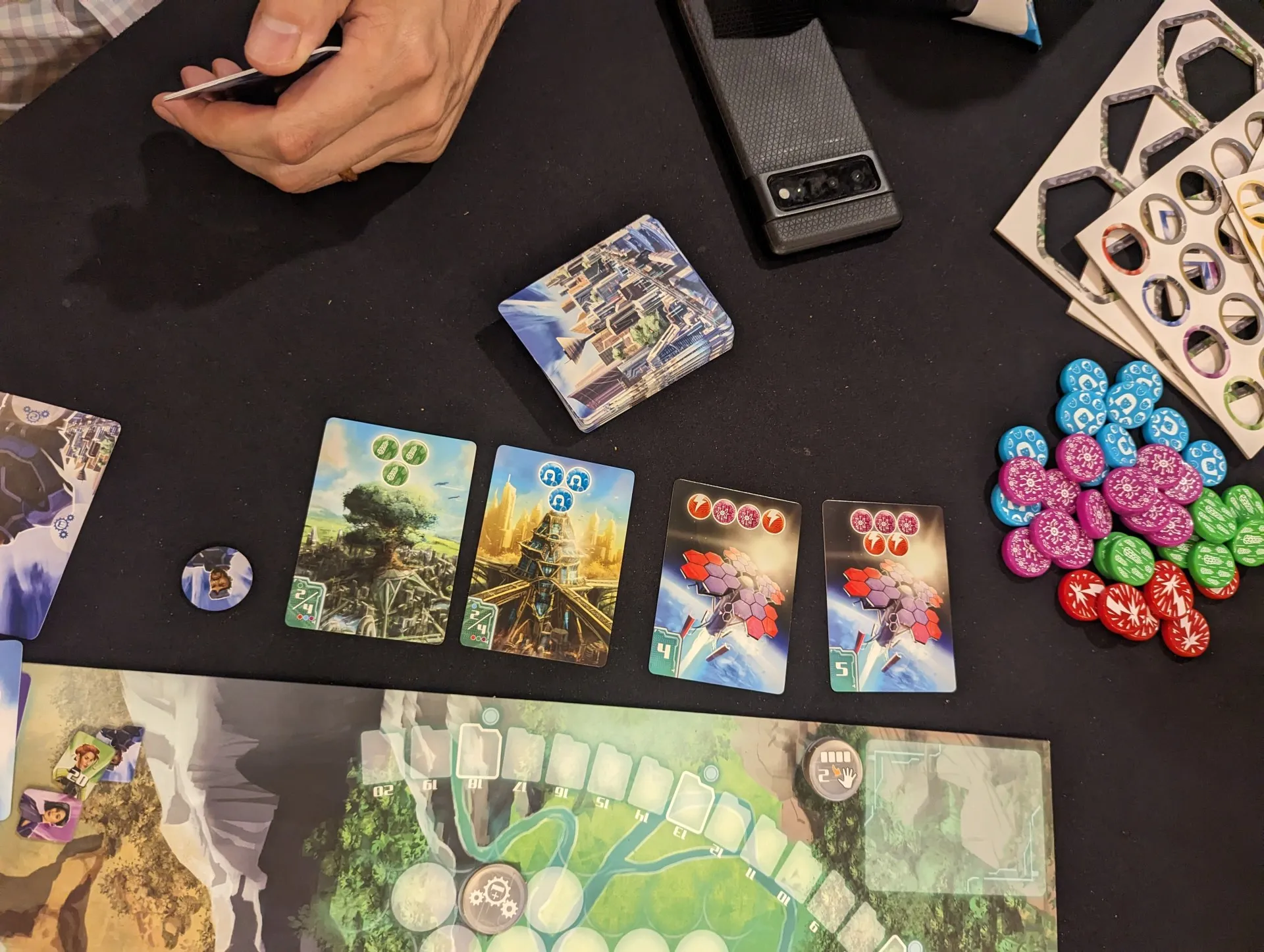Neotopia Board Game Review
Arcane Wonders recently sent over a massive box of games, and like a rational board game reviewer I instantly unboxed them all and began moving through them one at a time. Of all the games set to be reviewed, Neotopia was near the top of my most anticipated list. I had previously seen the game at GenCon 2023, and thought it looked pretty interesting. My wife LOVES tile placement games, and this is essentially a tile placement game with a few additional features. Let’s take a look at Neotopia from Arcane Wonders!
How to Play
This is not an in depth How to Play for Neotopia. Please consult the game’s rulebook for detailed instructions on how to play!
Neotopia is a tile placement game with a few unique mechanics that set it apart form other basic tile placement games. Each player will have a specific colour, although that colour matters less than you would think, only coming into play when you score your largest grouping of tiles in each region at the end of the game.
During the game, players will have cards in their hand (start with a few, gain more as an action) that depict certain patterns of colours that need to be created on the board to be scored. These patterns involve 2 colours of tiles, and will earn points depicted in the lower left corner of the card.
On a player’s turn, they can take up to three actions. The two available actions are to draw cards – either from the faceup area or the top of the deck – and place tiles on the board. Each action can be done multiple times, as long as the player does not exceed three actions total. Drawing cards is pretty self explanatory, but placing tiles is a bit unique, and here is where this game’s mechanics set it apart from others.
There are three regions in Neotopia, and each region is separated by a factory. Factories house tiles that can be placed in adjacent regions, and when the factories are emptied they are refilled from the central tile, which is then removed from the game while also indicating what to place on the next tile. Players will need to plan according to their cards, placing tiles that will complete cards in their hands. Each region scores separately, so building in all regions is important. Cards can only be built if the player placed the last tile that completes a card.
Players will continue drawing cards, placing tiles, and finishing cards to earn points in each region, which again is tracked individually. At the end of the game, players add their largest grouping of tiles to their score in each region, and then final scoring happens. The largest and second largest regions score points based on where the player marker is on the track. The smallest point region scores triple that region’s scoring marker.
There are other rules as well, including bonus tiles that let you perform more actions. But in a nutshell, this is how to play Neotopia.
How Much Do I Like It?
If this was a straight tile placement game with no bells or whistles, it would be just fine. I love a tile laying game as much as my wife does, and there are dozens of them to choose from. The ones that stand out to me are those that add an extra wrinkle into the gameplay, and I think Neotopia does that in spades.
The randomness of the tiles that get placed out from the factory is step one, and the fact that you are trying to build up all your regions as equally as possible for maximum points matters a lot too. But it goes further than just those two things. Bonus tiles can be hard to get, and everyone is probably going to try and obtain them. This forces you into strategic planning – play a high level card because there is a perfect opportunity? Or use your turn to nab a bonus tile or two that could be huge later.
I like that strategic thinking, and weighing the pros and cons of each action. There were a few people at the table who felt there was a bit too much randomness in the game, and for one player in particular, across a few games, felt their “tile” luck was pretty abysmal. I agreed with their assertion. They often found themselves “holding an empty bag” so to say, because everything they wanted to do was nullified by the actions of others. So they prepared for a new round only to have that plan thwarted as well.
There is some strategy in diversifying the cards you have in your hand to keep as many options open as possible, but there is a good amount of luck here that might sway the game one way or another. Usually, I’m not a huge fan of games that have this luck element, but because Neotopia plays so quickly, I (and the player we discussed previously) actually didn’t have a problem with it.
“It just wasn’t my day today!” was the outgoing response. And I think that’s going to happen to someone during most games of Neotopia.
Conclusion
That said, overall it is a really competitive game, and trying to get the tiles you need and the locations you need is going to require careful planning. The payoff after a 30-40 minute game, however, is fantastic, and I’m very excited to bring Neotopia to the table again very soon!

